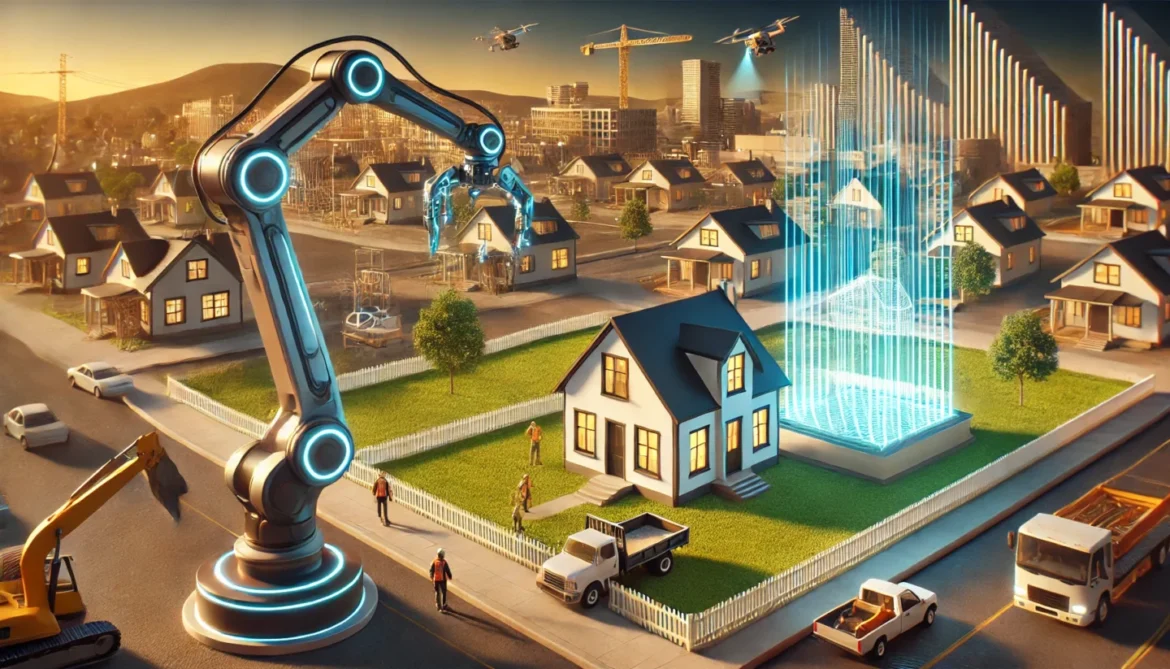Technology is shaking up just about everything these days, including how we tackle the big issue of affordable housing. With home prices skyrocketing, tools like 3D printing and artificial intelligence (AI) are stepping in to make housing cheaper, faster, and smarter. These advancements might just redefine how we think about affordable living and manufactured housing.
The Affordable Housing Problem
The struggle to find affordable housing isn’t new, but it’s gotten worse with urban growth, economic disparities, and a booming population. Millions of people are stuck looking for decent homes they can actually afford. Traditional construction is effective but can be slow, expensive, and resource-heavy. That’s where adding the newest technology comes into play, offering new ways to approach the problem of producing affordable housing in faster times than before.
How 3D Printing is Changing the Game

3D printing, also called additive manufacturing, is a total game changer. A few decades ago, printing a house sounded like sci-fi. Now, it’s a reality that’s saving time and money.
What’s 3D Printing All About?
Basically, 3D printing uses machines to layer materials like concrete or plastic to build parts of a house. These machines are super precise, cutting down on waste and mistakes. They can create walls, floors, and roofs with very little human effort.
Faster, Cheaper Homes
One of the best things about 3D printing is how quick and cost-effective it is. Since a lot of the work is automated, labor costs drop. Plus, what might take months to build the old-fashioned way can be done in just days or weeks. That speed is crucial in areas hit by natural disasters or places with urgent housing needs (think hurricane relief in places like Florida or the Carolinas).
Green and Clean
3D printing is good for the environment, too. It minimizes waste, and some methods even use recycled materials. It’s a win-win for affordability and sustainability.
Real-Life Examples
More so today than ever, all over the world, companies are already using 3D printing to build affordable homes. Icon, a leader in 3D-printed construction, has created homes in the U.S. and Mexico, including entire communities for low-income families. Another company starting to make their mark, Mighty Buildings, uses 3D printing and robotics to produce prefab homes that are energy-efficient and affordable. Companies like Apis Cor are also gaining attention for building cost-effective housing in just a matter of days (their company description literally states they develop advanced robotics to combat the housing crisis). These projects show how scalable and impactful this technology can be.
How AI is Revolutionizing Housing

While 3D printing focuses on the physical construction, AI is all about planning and optimizing. It crunches data to make housing projects smarter and more efficient.
Smarter Design and Building
AI tools can analyze loads of data to figure out the best designs and materials for homes. They even simulate different scenarios to find the most efficient construction methods. This saves money and ensures the homes are durable.
Homes That Think Ahead
AI doesn’t stop when the house is built. It can monitor the home’s condition to predict maintenance issues before they become expensive fixes. In smart homes, AI can also manage energy usage, cutting down utility bills and making life easier for residents.
Fighting Inequality with Data
AI helps identify areas that need affordable housing the most. By looking at data like income levels, population growth, and housing availability, it helps planners focus on where resources are most needed.
When 3D Printing, AI, and Manufactured Housing Come Together

Manufactured housing—homes built in factories and moved to their final sites—has been a reliable option for affordable housing for years. Add 3D printing and AI into the mix, and things get even more exciting.
3D Printing in Factories
Using 3D printing in manufacturing lets companies create high-quality, customizable parts quickly and cheaply. Walls, roofs, and other components can be printed in factories and then assembled on-site. This blends traditional and modern methods for great results.
AI for the Win
AI optimizes the whole process—from managing supply chains to keeping production on schedule. It also ensures every part meets safety and quality standards.
Affordable for More People
With lower costs and faster production times, combining 3D printing and AI with manufactured housing could make affordable homes available to more families. Governments and non-profits could scale up housing projects to meet demand.
Potential Challenges to Work Through
While these technologies have massive potential, there are some hurdles to clear:
- High Start-Up Costs: Getting the equipment and systems in place for 3D printing and AI isn’t cheap. But as the tech advances, those costs should drop.
- Rules and Regulations: Building codes don’t always keep up with new tech. Policymakers will need to adapt without stifling innovation and .
- Skills Gap: Workers need training to use these new tools. Investing in education is key.
- Ethical Concerns: AI needs to be transparent and fair, especially when making decisions about housing priorities.
What’s Next On The Horizon?
The combo of 3D printing and AI is set to change how we think about affordable housing. Together, they make homes cheaper, faster to build, and better designed. When paired with manufactured housing, these tools could likely offer a complete solution to the housing crisis.
Collaboration from every market (public, private, etc.) will probably become more crucial as time passes and technology progresses. Governments, businesses, and communities will need to work together to make the most of these technologies. By addressing challenges and pushing for innovation, we can move toward a future where everyone has access to safe, affordable housing.
At the end of the day, 3D printing and AI aren’t just about cool tech—they’re about creating opportunities and helping people build faster and with a lower overall cost. They give us the chance to rethink how we build and provide homes and buildings to individuals, businesses and government. With the right approach, these tools could make a real difference and help close the housing gap for good.
